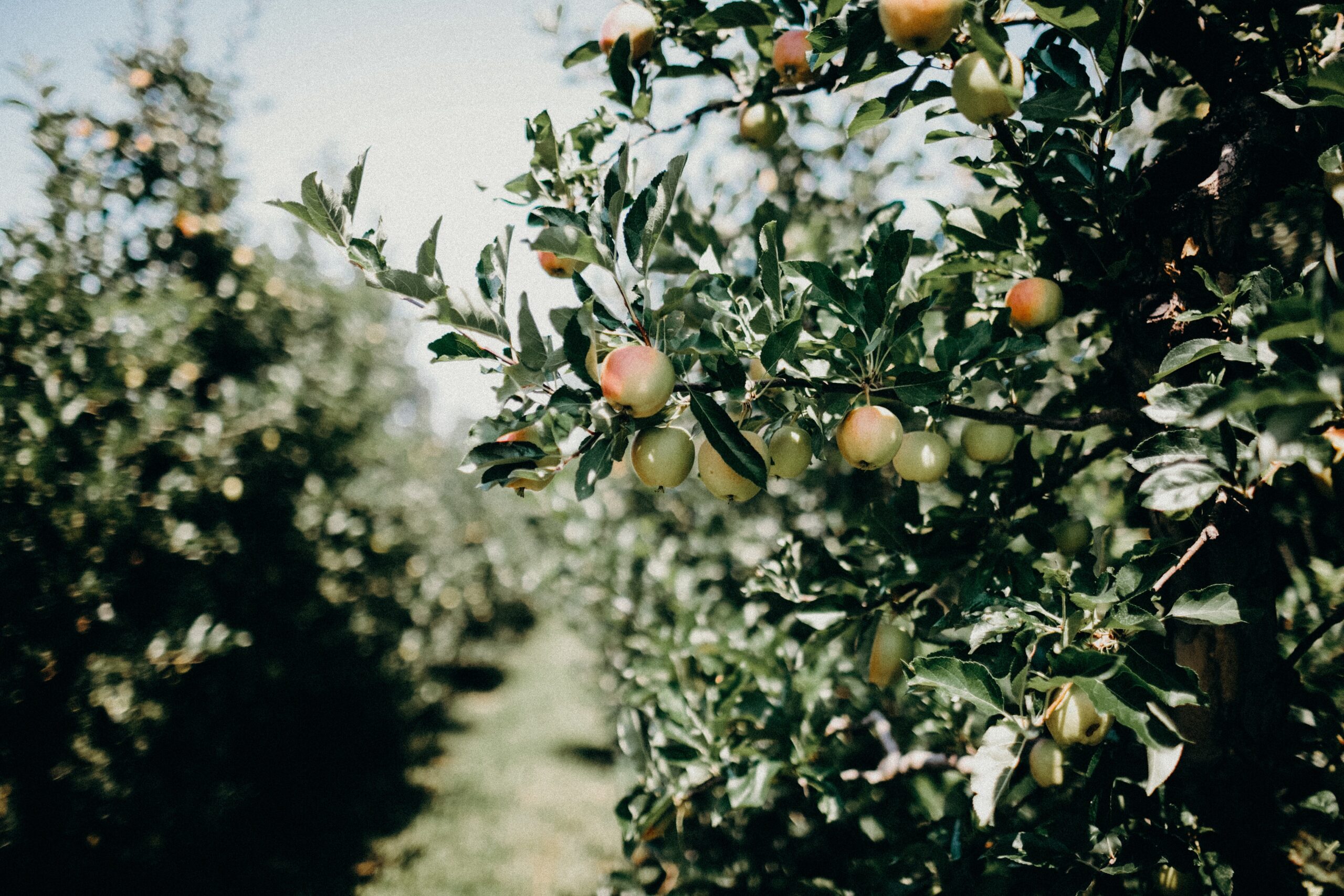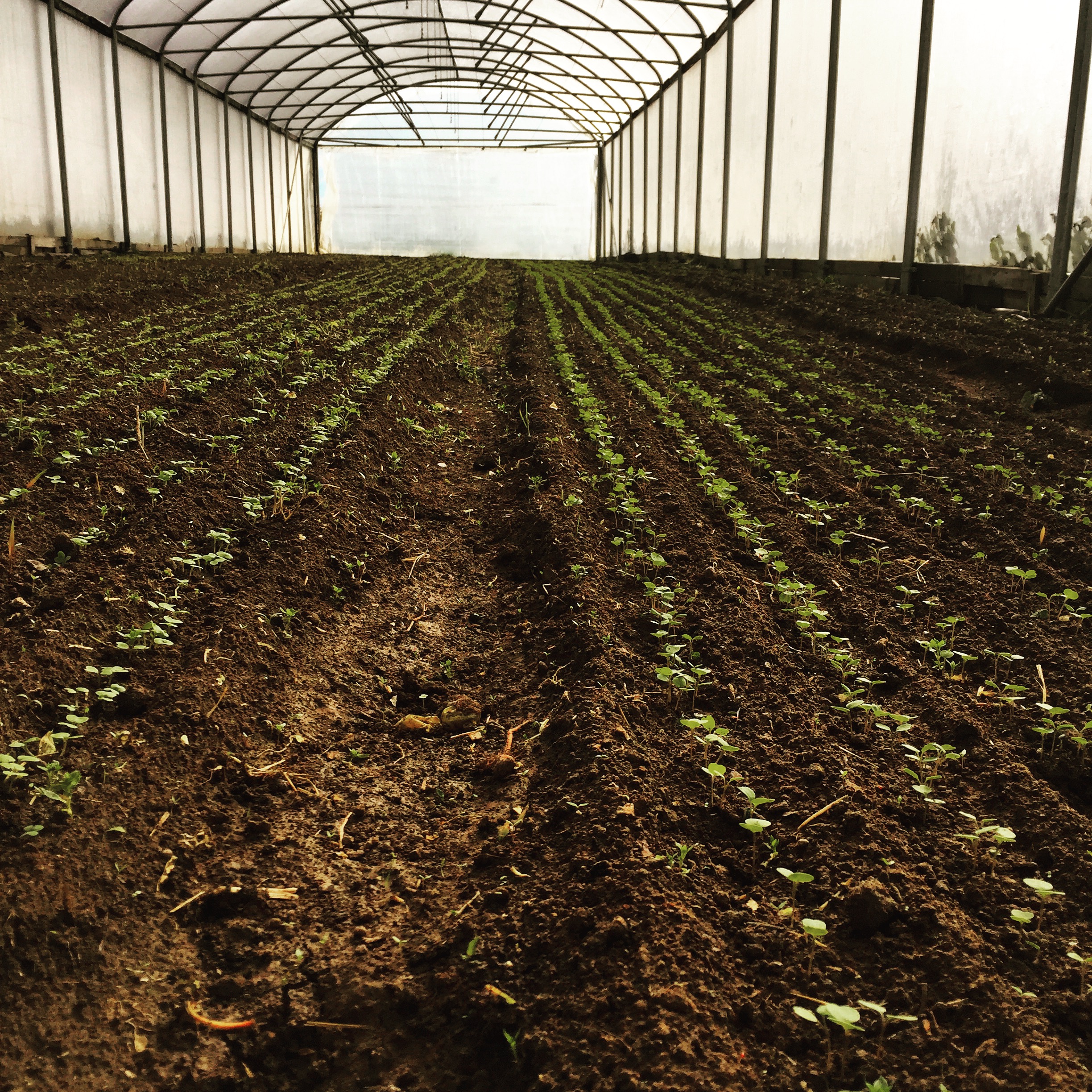
Phillips, Michael. The Holistic Orchard: Tree Fruits and Berries the Biological Way. Chelsea Green, 2013.
Recently, there has been discussion between the benefits of using neem-derived insecticides versus pure neem oil. Michael Phillips’ opinion on this differentiation is interesting and worth looking into if you are invested in his methods of managing your perennial or annual operation organically with an eye toward microbial health. He discusses it in depth in his book, The Holistic Orchard. Phillips speaks to the importance of engaging biology to keep disease and pests from taking hold. The key to his method is consistent monitoring and implementation of seasonal spray treatments that engage a diverse and abundant biological ecosystem.
Pure neem oil is at the heart of Michael Phillips’ ongoing nutritional spray program. He describes its efficacy primarily as an insect growth regulator, owed to the azadirachtin compounds that strongly inhibit the development of insects that consume it. Specifically, azadirachtins suppress the production of the hormone that allows insect larvae to shed its old skin, trapping the larvae in this stage until it dies. Other constituents in neem oil work as oviposition deterrants, confusing sexual communication, mating, or leading the female to lay her eggs in an inopportune place. Finally, when ingested, a leaf treated with neem oil will cause an insect to lose the ability to swallow, regurgitating the leaf and repelling the pest from feeding on the treated plants. According to Phillips, utilizing azadirachtin without the other components of neem is cheating oneself and your plants.
Phillips identifies the fatty-acid based connections as a primary source of healthy biology in orchard ecosystems. In particular he says, neem contains vitamin E, essential amino acids, and secondary plant metabolites called terpenoids and isoflavonoids, primarily derived from palmitic, stearic, linoleic, and oleic acids. An interesting aspect to folks looking to balance minerals in their soil or address nutrient deficiencies is that pure neem oil also contains trace amounts of nitrogen, phosphorous, potassium, zinc, copper, iron, magnesium, and manganese.
In a nutshell, says Phillips, healthy biology of any sort thrives on fatty-acid-based connections. These fatty acids operate in different ways to stimulate tree immune response and protect trees from climatic stresses. Mycorrhizal and saprophytic fungi in the soil use them as a food source when the ground begins to warm in early spring. Fat nutrition encourages diverse organisms to out compete canker infections, bacterial spot and fire blight buildup.
Thankfully, Phillips discusses the tricks of the trade to using unadulterated neem oil. The characteristic of pure neem oil that can scare folks away is due to its high levels of natural vegetable fats – when temperatures hit 60F, pure neem oil is as thick as butter. His method of emulsifying neem into a spray is reminiscent of the time and planning that is necessary for lactofermentation or making pie crusts. When it is time to spray, place the container of neem in a warm room (but out of the sunlinght) for a day until the consistency resembles a homogeneous liquid. He suggests placing neem in a pot of warm water to finish the job. Biodegradable soap is used as an emulsifying agent, and mixed in directly to the neem oil at a rate of 1 tablespoon soap to 6 ounces oil. Pour the oil and soap blend into warm water, stirring vigorously, before adding the mixture to its full volume of cooler water for spraying. Spray immediately. According to Phillips, not only are you reducing pests reproductive and feeding abilities, but also feeding bacterial and fungal diversity that are innate to plants’ immune responses.
Michael Phillips advises specific timing and rates for different plant varieties in his holistic approach to disease and organic health management. It also depends on the pests and diseases that are indigenous to your region. However, spring and fall are when he most highly recommends spraying pure neem oil, in addition to liquid fish and effective microbes. Is biology a priority in your farm management plan? What steps do you take to maintain the fungal and bacterial diversity on your plants and in your soil?
Resources:
Phillips, Michael. The Holistic Orchard Tree Fruits and Berries the Biological Way. Chelsea Green, 2013.
Phillips, Michael. “Articles on Holistic Gardening: Pure Neem Oil” www.groworganicapples.com. April 26, 2017.
*The views and opinions expressed in this article are those of the author under review and do not necessarily reflect the official position of Concentrates, Inc.


